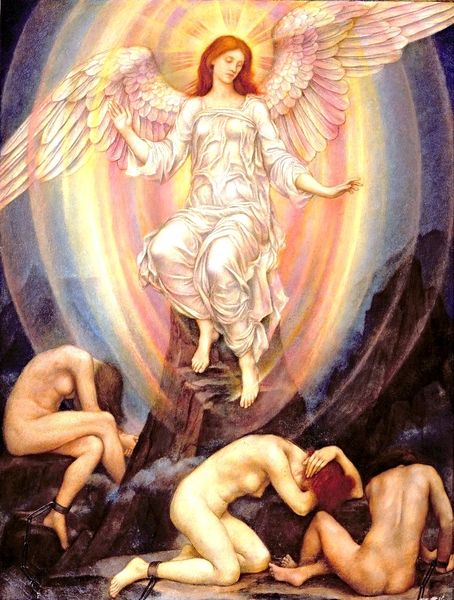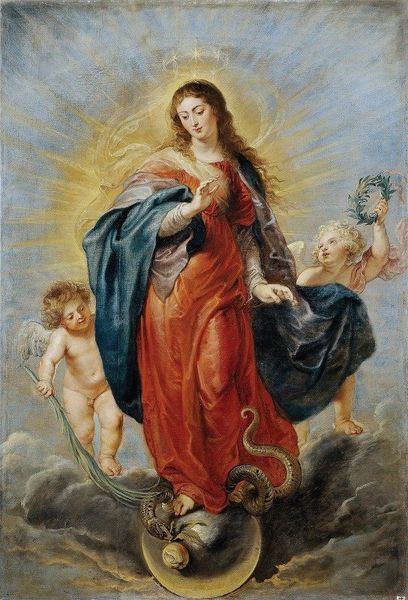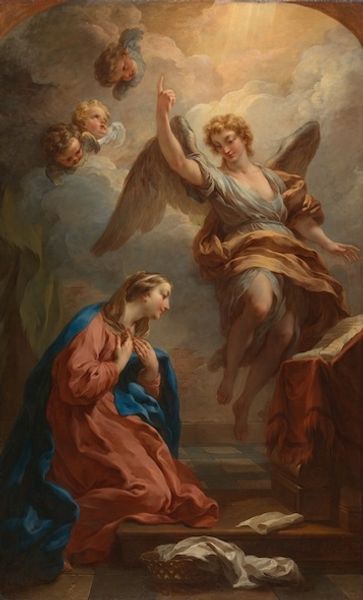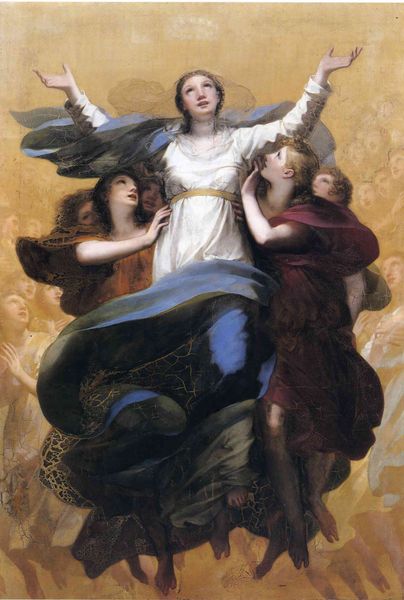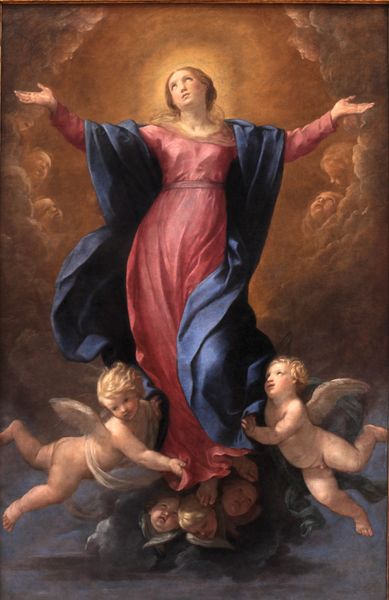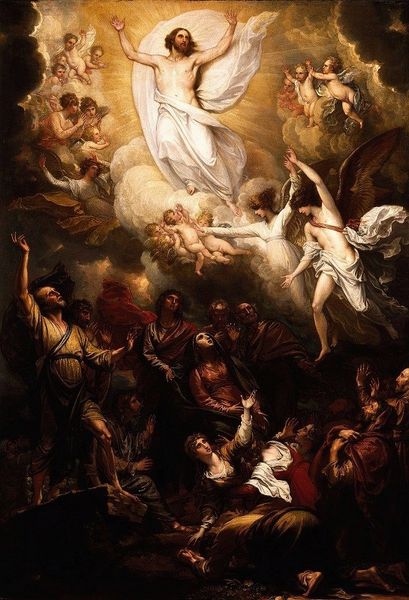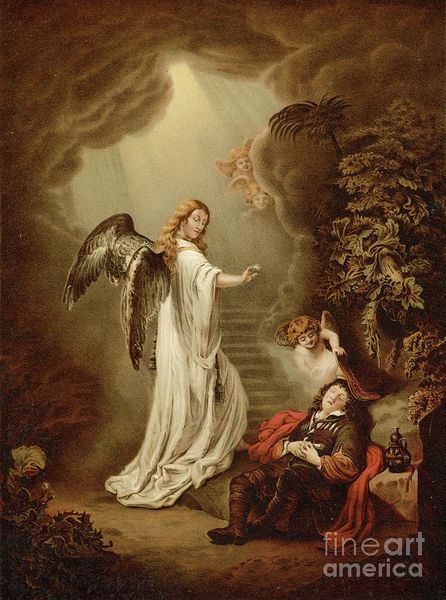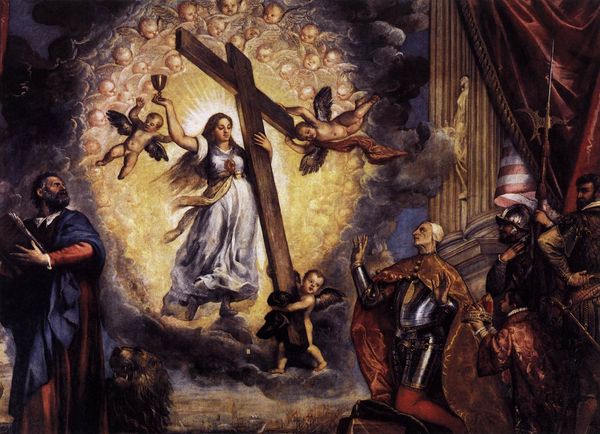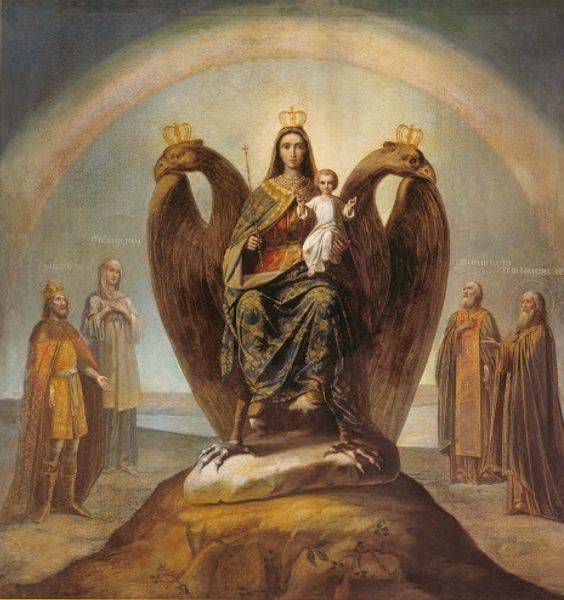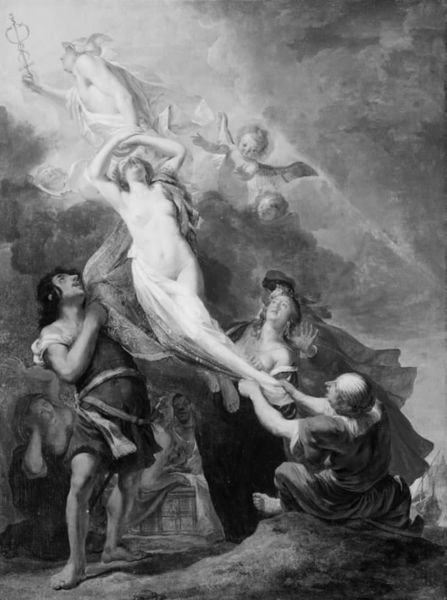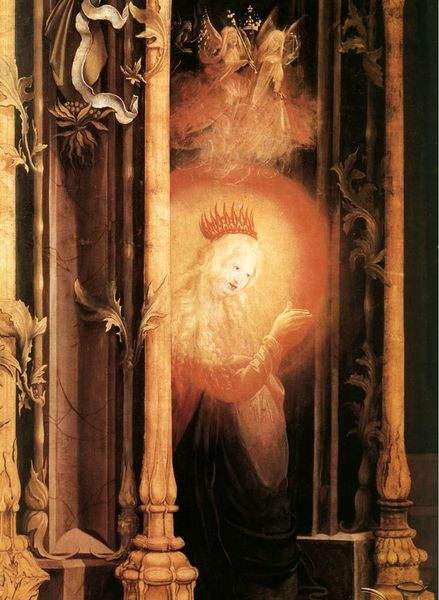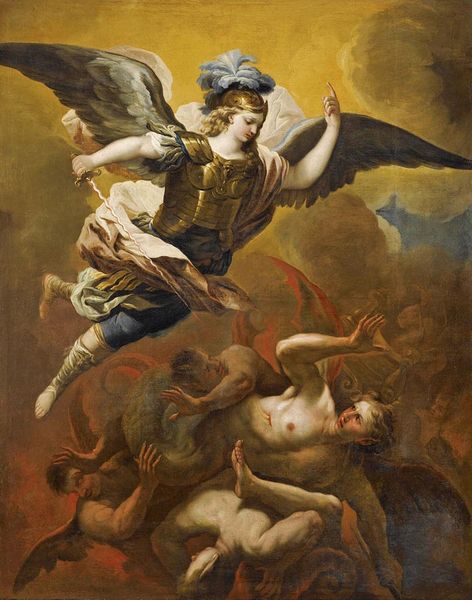
The Woman Clothed with the Sun Fleeth from the Persecution of the Dragon c. 1797
0:00
0:00
Copyright: Public Domain: Artvee
Curator: Oh, my goodness, what a whirlwind! I feel like I've just stepped into a baroque opera. Editor: Indeed! Before us, we have Benjamin West's "The Woman Clothed with the Sun Fleeth from the Persecution of the Dragon," circa 1797, rendered in oil paint. It's quite a monumental piece, capturing a scene right out of the Book of Revelation. Curator: The drama! The theatrical lighting! The colors practically vibrate. It's almost… apocalyptic disco. You can just feel the divine energy crackling off the canvas. Editor: The painting encapsulates the allegorical struggles within the Christian narrative, steeped in the politics of the era. The "woman" represents, allegorically, the Church—or perhaps more broadly, any persecuted people, fleeing from tyranny embodied by the dragon. The Romanticists were quite keen to take a symbolic theme or two from scripture. Curator: Absolutely! And those colors, that glorious, billowing fabric. It feels so human, so vulnerable even amid the grand celestial battle. You almost want to reach out and protect her. She looks positively overwhelmed. And there's a rather psychedelic dragon, is it not? Editor: One certainly could consider the visual drama. West situates the piece amidst significant social upheaval, where traditional power structures were being questioned. He channels the narrative to perhaps underscore themes of resilience and resistance, in the face of adversity, drawing on interpretations rooted in feminist and liberation theology. The woman's flight could then reflect various groups facing systemic oppression. Curator: Yes, but look at that almost defiant reach of her arms, her crown of stars a statement. It feels like even while in flight, she's still grasping for hope, for the possibility of… glitter amidst the chaos. Do you see that weird red lobster dragon thing? So camp! Editor: Its function transcends simple camp. The monstrous figures draw on very real societal anxieties, speaking to a profound tension between stability and change, authority and autonomy, in late eighteenth-century European political philosophy. I would further submit the figures in clouds are also very representational of philosophical perspectives of the time... but, again, more material. Curator: Perhaps. But as I look closer, the colors start to whisper their secrets. A dance of shadow and light, like a spotlight illuminating the stage for our brave heroine. This canvas vibrates with potential. What I perceive as gaudy others might see as optimistic. Editor: And what strikes me is the endurance of these stories, how they morph to speak to various eras of turmoil, reminding us that resilience often sparks creative acts of rebellion and imaginative narratives of hope. Curator: It seems that even centuries later, we can still hear the echoes of that opera, can't we?
Comments
No comments
Be the first to comment and join the conversation on the ultimate creative platform.
